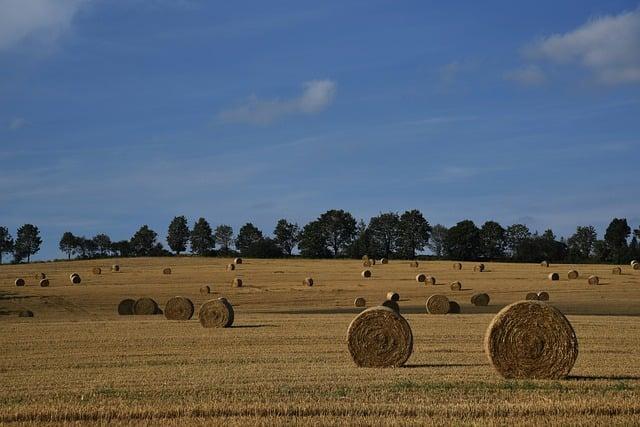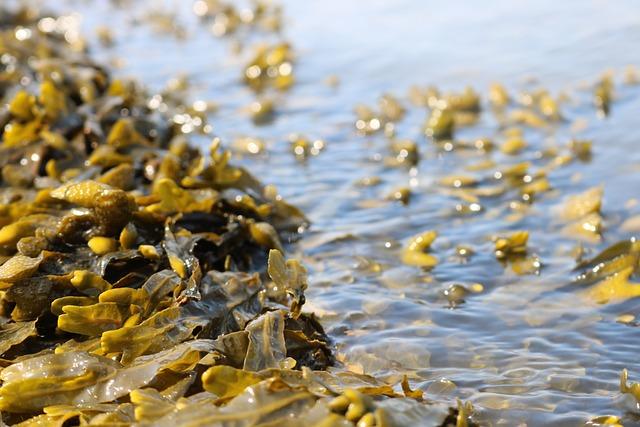- Introduction to Seaweed Farming for Carbon Sequestration
- Basics of Seaweed Farming
- How Seaweed Sequesters Carbon
- Environmental Benefits of Seaweed Farming
- Economic Opportunities Through Seaweed Farming
- Conclusion
- FAQs
- References
Introduction to Seaweed Farming for Carbon Sequestration
In an era where climate change is a growing concern, innovative ways to combat rising carbon levels are constantly being explored. One such method gaining traction is seaweed farming. This sustainable practice not only helps in feeding populations and generating income but also plays an essential role in sequestering carbon from the atmosphere. In this article, we will delve deep into the fundamentals of seaweed farming, explore how it sequesters carbon, discuss its environmental advantages, and highlight potential economic opportunities brought by sustainable seaweed cultivation.
We'll cover how seaweed, a fast-growing marine plant, absorbs carbon dioxide (CO₂) more efficiently than terrestrial plants, and how expanding seaweed farms could benefit both marine ecosystems and coastal economies. By the end of this read, you'll be equipped with a comprehensive understanding of why many experts regard seaweed farming as a potent natural solution against climate change.
Basics of Seaweed Farming

(Image: Pixabay/@shargoo)
Seaweed farming, sometimes referred to as kelp aquaculture, has grown rapidly over recent decades thanks to its simplicity and low input needs. But what does seaweed farming involve? Typically, seaweed farmers grow different types of macroalgae such as kelp, nori, and wakame, either in ocean-based farms or controlled environments.
The process starts by attaching seedlines of juvenile seaweeds to suspended lines in coastal waters. As seaweed grows, it absorbs vital nutrients from the water, needing very little management compared to traditional agriculture. The process requires no freshwater, fertilizers, or herbicides, making it environmentally friendly and sustainable.
Recently, seaweed farming is being reimagined not just as a source for food or pharmaceutical products but as a crucial tool for fighting climate change. With a specific focus on certain species of seaweed and deliberate farm placements in strategic areas, these aquatic crops are increasingly acknowledged for their ability to capture substantial amounts of CO₂ from the environment.
When done correctly, seaweed farming can be highly productive. In fact, some species can grow up to 30–60 centimeters per day, reaffirming the efficiency and potential scale of sea-grown crops. Despite being an ancient practice in some parts of the world, modern seaweed farming could pioneer a new wave of sustainability in both agriculture and environmental restoration.
How Seaweed Sequesters Carbon

(Image: Pixabay/@Mollyroselee)
One of the standout benefits of seaweed farming is its ability to naturally sequester carbon dioxide, mitigating global warming. But how exactly does seaweed remove carbon from the atmosphere, and how can scaling this farming method contribute to long-term climate solutions?
Like all photosynthetic organisms, seaweed uses sunlight to convert CO₂ into oxygen and biomass through photosynthesis. Given the fast-growing nature of macroalgae species, the rate of CO₂ absorption is exceptionally high, far surpassing that of many terrestrial plants. Some studies suggest that seaweed can absorb carbon 20 times faster than land-based plants. This rapid uptake of carbon makes it an ideal mechanism for carbon storage.
Once captured by seaweed, a portion of the carbon is used to support growth in the form of biomass. However, a significant amount of the carbon sequestered by seaweed is eventually transferred to the ocean floor when mature plants break off and sink. This process, called carbon burial, can store carbon for hundreds to thousands of years in deep ocean sediment, effectively locking it away from the atmosphere.
Furthermore, research suggests that producing seaweed-based bioproducts, such as fertilizers or animal feed, could create additional pathways for long-term carbon storage. Once processed and used, these products either release a minimal amount of CO₂ or ensure carbon is recycled within ecosystems rather than returning to the atmosphere.
Environmental Benefits of Seaweed Farming

(Image: Pixabay/@Mollyroselee)
Aside from carbon sequestration, seaweed farming brings numerous other environmental benefits. One key advantage is the enhancement of coastal ecosystems and water quality. By absorbing excess nutrients like nitrogen and phosphorus, seaweed helps reduce ocean eutrophication and harmful algae blooms that threaten marine life.
Seaweed farms provide a habitat for marine organisms, acting as nurseries for fish, crustaceans, and other wildlife. In turn, increased biodiversity enhances ecosystem resilience and supports local fishing industries, fueling sustainable fisheries initiatives.
Moreover, seaweed forests have protective functions. They act as natural barriers against storm surges and coastal erosion by reducing the energy of waves before they hit the shoreline. In a time of increasing climate-induced weather events, this is a critical service that can mitigate the damage caused by rising sea levels and tropical storms.
Finally, large-scale seaweed farming can help deacidify ocean waters. Ocean acidification, accelerated by excessive CO₂ absorption, poses a severe threat to coral reefs and calcifying organisms such as shellfish. Seaweed mitigates this by absorbing the CO₂ dissolved in seawater, ameliorating the harmful effects on marine ecosystems.
Economic Opportunities Through Seaweed Farming

(Image: Pixabay/@qimono)
Apart from the environmental impacts, seaweed farming presents a host of economic benefits. For coastal communities, especially those in developing nations, seaweed farming opens new revenue streams. Without requiring vast financial investment or sophisticated tools, this form of aquaculture creates jobs in planting, harvesting, and processing.
The production and sale of seaweed products hold immense potential. Seaweed is globally popular for human consumption (think sushi!), but it is also an increasingly vital source of biofertilizers, cosmetics, feed for livestock, and biofuels. These expanding industries can significantly boost local economies while reducing reliance on unsustainable practices.
Beyond creating immediate employment and trade avenues, governments and private sectors are seeing the potential of seaweed farms to be integrated into carbon credit markets. By quantifying carbon offsets earned from growing seaweed, companies and organizations can invest in these green initiatives while also complying with environmental regulations.
With continuous innovation around seaweed-derived products, including biodegradable packaging and eco-friendly bioplastics, the future of seaweed-related industries is bright. The demand for sustainable alternatives will only grow over time, making seaweed an economic asset.
Conclusion
Seaweed farming for carbon sequestration represents an exciting opportunity to contribute to reducing atmospheric CO₂ levels while fostering marine biodiversity and supporting coastal economies. The multifaceted environmental and economic benefits uncovered in this article should provide food for thought for individuals, businesses, and policymakers alike.
As the planet enters a crucial decade in the battle to avert catastrophic climate change, scalable and sustainable ventures like seaweed farming can lead the way toward a healthier, more sustainable future. By further researching and investing in marine farming infrastructure, we can harness seaweed’s full potential to curb greenhouse gas emissions, restore marine habitats, and even drive economic growth across coastal regions.
FAQs
What is seaweed farming?
Seaweed farming refers to the cultivation of various forms of macroalgae for use in food, cosmetics, pharmaceuticals, biofuels, and environmental purposes. Unlike traditional agriculture, seaweed farming occurs in marine or brackish water environments, primarily along coastlines.
How does seaweed help in carbon sequestration?
Seaweed sequesters carbon by absorbing CO₂ from the atmosphere during photosynthesis. It captures carbon much more efficiently than terrestrial plants, storing it as biomass. When seaweed dies and sinks to the ocean floor, the carbon it holds can be trapped in seabed sediments for extended periods.
Can seaweed farming mitigate climate change?
Yes, seaweed farming can play a significant role in mitigating climate change by removing CO₂ from the atmosphere and oceans. Additionally, using seaweed in eco-friendly products (like fertilizers and bioenergy) can reduce reliance on fossil fuels and synthetic chemicals, lowering overall carbon emissions.
Is seaweed farming profitable?
Yes, seaweed farming can be profitable, especially given rising global demand for seaweed in multiple industries. From food products to environmental solutions such as biofuels and bioplastics, seaweed provides economic prospects for coastal communities.

